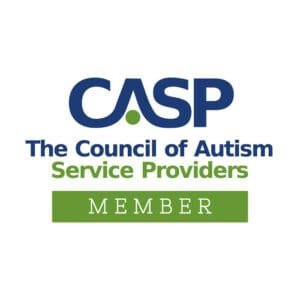Top 5 Steps to Make Your Home Autism-Friendly
Useful Suggestions by ABA Therapy Experts in St. Louis
For a child with Autism Spectrum Disorder (ASD), the world can often be like a minefield. A screeching sound, a bright light, a loud laugh, a crowded room, anything could trigger a sensory overload. This in turn could lead to frustration, confusion, anger, physical reactions, tantrums, or other problem behaviors. Whether it is a school, playground, birthday party, social or cultural event, or something else, there are far too many possibilities that a sensory overload may occur.
The one place where the child will generally feel safe, relaxed, and comfortable is at home. With a minimal amount of money and effort, you can turn your home into an Autism-friendly sanctuary for your child. The Applied Behavior Analysis (ABA) therapy experts at AB Spectrum offer useful suggestions to create an Autism-friendly home.
Tips to Create a Peaceful Personal Haven for Your Child with Autism
In reality, no home can be perfectly calm or without any disturbances. The parents or siblings will entertain guests, try new cuisines, play certain types of music, or engage in other activities that could potentially cause a sensory overload in your child struggling with ASD. Not to mention, family life can be unpredictable. An ailing elder, an injured sibling, or a work emergency could cause at least a temporary period of turmoil, which can wreak havoc in the life of your child with ASD. At such times, the child needs some familiar and expected comforts that can soothe their mind and help them deal with the “change” until the situation improves.
Here are some ideas to create a peaceful, Autism-friendly haven in your home:
Reduce Sensory Triggers: Once you know what causes a sensory overload for your child, take all the necessary steps to minimize those triggers. For example, if smells are an issue, use cleaning supplies with minimal odors and buy scent-free personal hygiene products. If noise is a trigger, keep the radio down, and encourage the siblings to use headphones while listening to loud music. If strong lights are the trigger, make sure you change out all fluorescent or colorful bulbs at home to simple CFL or LED.
Keep At-Home Therapy to Minimum: Based on the child’s needs and developmental goals, their day may be filled with school activities, after-hour therapy sessions, as well as continued at-home therapy with parents and caregivers. However, too much therapy without adequate breaks may make the child dread the thought of coming back home for more therapy! Limit at-home therapy to what is absolutely necessary and useful. Make it pleasant and enjoyable for your child by masking it through play or try relaxing sensory or occupational therapies in the home.
Always Stock the Child’s Preferred Foods at Home: Food can often be a calming factor for your child with Autism. While you do not need to shy away from introducing them to newer foods, do allow them the option to have something familiar and enjoyable. The child needs to look forward to eating something that is tasty, comforting, and expected.
Create a Dedicated Nook or Spot for your Child: Children with Autism often need some downtime to relax and regroup their thoughts, especially if they are in a state of agitation. Creating a spot or nook for their exclusive use provides them with a safety net they can fall back on when they have difficulty in dealing with a situation or their emotions. It could be in the form of an indoor swing, a tepee, a quiet zone with their favorite toy or pillow, or many other creative options. You know what will work best for elevating your child’s mood and making them feel safe and relaxed at home.
Create a Realistic Schedule for the Child and the Family: Clear, simple instructions and predictable routines are extremely comforting for children with ASD. Maintaining a daily schedule and incorporating visual reminders will help your child, as well as other family members, get a clear understanding of what to do and what to expect.
In addition to these quick fixes, keep an eye out for any signs of stress in your child with Autism. Is a sibling bullying the child? Is a new sound, sight, or smell causing a sensory overload? Is the child feeling lost, confused, or scared about any aspect of the home environment? Once you have zeroed in on the problem, it will be easier to find a relevant solution.
Explore the Best ABA Therapy at an AB Spectrum Autism Treatment Center near You
Autism and Behaviour Spectrum (AB spectrum) is the world’s first ReggioABA clinic, which features a child-led curriculum and a “Therapy through Play” approach. Using the principles of ABA, we follow the Natural Environment Training (NET) philosophy and make the therapy sessions fun, engaging, and relaxing for the child. Our team consists of licensed and experienced ABA practitioners, including Board-Certified Behavior Analysts (BCBA) and Registered Behavior Technicians (RBT). We create customized, high-impact ABA therapy plans to promote the child’s function and independence and improve the quality of life of the entire family.
We focus only offering clinic-based ABA therapy at our locations in St. Charles, Mehlville, St. Peters, Florissant, and Chesterfield, Missouri.
For a tailor-made ABA curriculum and the best ABA therapy plans in and around St. Louis, count on the experts at AB Spectrum. Call 314.339.7732 to learn more about our programs or book a no-fee consultation today.







